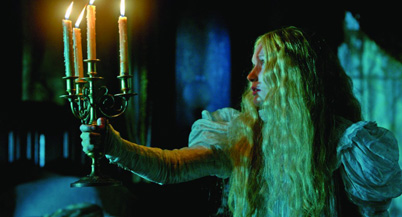|
|
The 400-Word Review: Crimson PeakBy Sean CollierOctober 20, 2015
All is clearly not right at the house, from the gaping hole in the ceiling to the blood-red clay that oozes up through the floor. Edith begins trying to unravel the mysteries of the place, but is quickly felled by an unexplained illness. Crimson Peak grinds nearly to a halt here, as endless sequences of Edith wandering the halls linger and linger. To be fair, these are still beautiful, evocative of mid-century Italian horror and period drama simultaneously. They are just very, very slow. Then there are the ghosts, spectral advisors that alternately terrorize and inform every 20 minutes or so. It’s baffling that del Toro, a visual maven, allowed schlocky, computer-generated ghouls to dominate his film; they look simply awful and pull the viewer out of the film in a hurry. Fine acting and beautiful sets are not enough to make me pretend an XBox monster belongs in a serious film. My Rating: 6/10 Sean Collier is the Associate Editor of Pittsburgh Magazine and a member of the Broadcast Film Critics Association. Read more from Sean at pittsburghmagazine.com/afterdark
[ Read more 400 word movie reviews ]
[ View other movie reviews ]
[ View other columns by Sean Collier ] [ Email this column ]
|

|
|
|

|
Thursday, October 31, 2024
© 2024 Box Office Prophets, a division of One Of Us, Inc.


